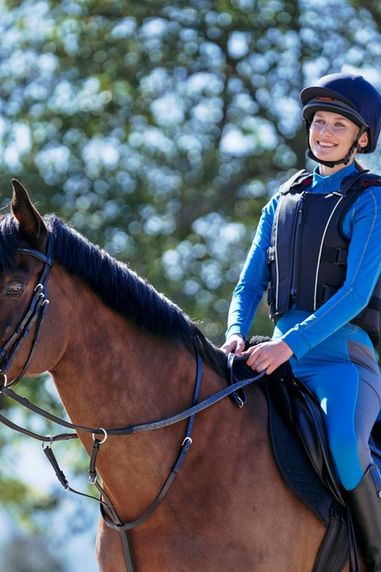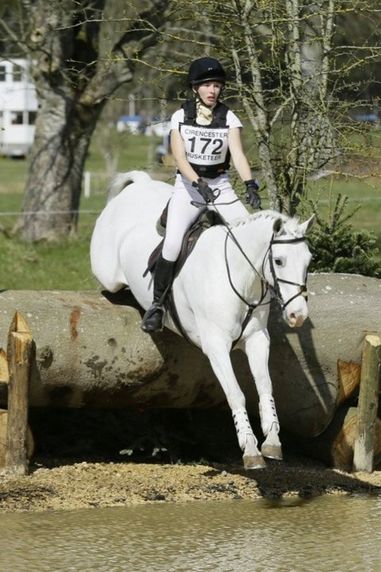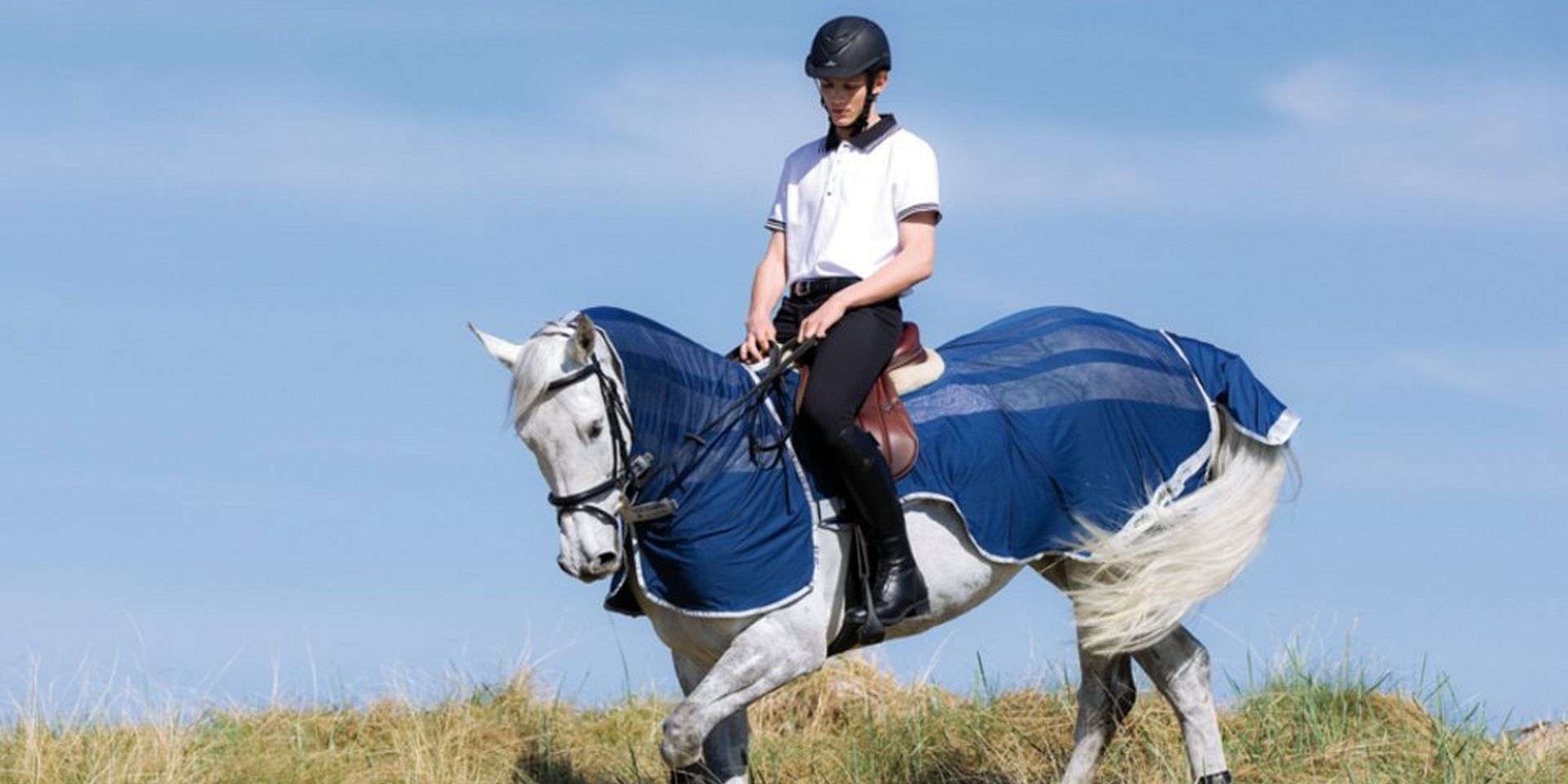
Headshaking is a symptom of a neurological condition whereby the horse shakes or jerks its head uncontrollably for no apparent reason, causing the horse significant distress. The condition can leave affected horses impossible to ride and dangerous to handle, which can result in euthanasia. It is thought to affect between 10,000 and 20,000 horses in the UK, and can be triggered by factors which arise the most at this time of year.
What is it?
In healthy horses, as you may have noticed, the horse has evolved to have certain mechanisms which deter insects and flies from landing on them. Whilst not always successful, the horse’s main defence against flies include twitching of the muscles, tail swishing and ear flicking.
These reactions are controlled by ‘panniculus muscles’ which are found in the corresponding areas of the body; however there are no panniculus muscles on the head or neck. When a fly disturbs the hairs of the neck or head, the fly is removed by head shaking from side-to-side. Therefore headshaking to remove flies is automatic in all healthy horses and will occur during the warmer days of spring and summer, however in true ‘headshaking’ horses; this behaviour is exhibited repetitively and more aggressively.
Horses with this condition may have horizontal headshaking, but the tell-tale sign is the vertical movement. The motion is a sudden, intense downward flick of the nose and in severe cases the whole head and neck may be involved. Headshakers also have a tendency to rub their nose and muzzle on objects which can become vigorous, incessant and even frantic. They may even bang their heads on stable walls to relieve the unbearable pain running along the nostrils and face due to the tingling/pricking sensation experienced.
What causes it?
Many vets have connected this condition to the irritation or inflammation of the facial nerve (trigeminal nerve); which runs from the back to the front of the head. There are various factors which may trigger headshaking, and this can cause the horse a great deal of pain. These triggers are not seen to be the actual cause of headshaking, only factors which can aggravate the symptoms. Triggers include:
- Sunlight
- Wind
- Riding
- Stress
- Bugs
- Allergies (e.g. to pollen)
- Exercise
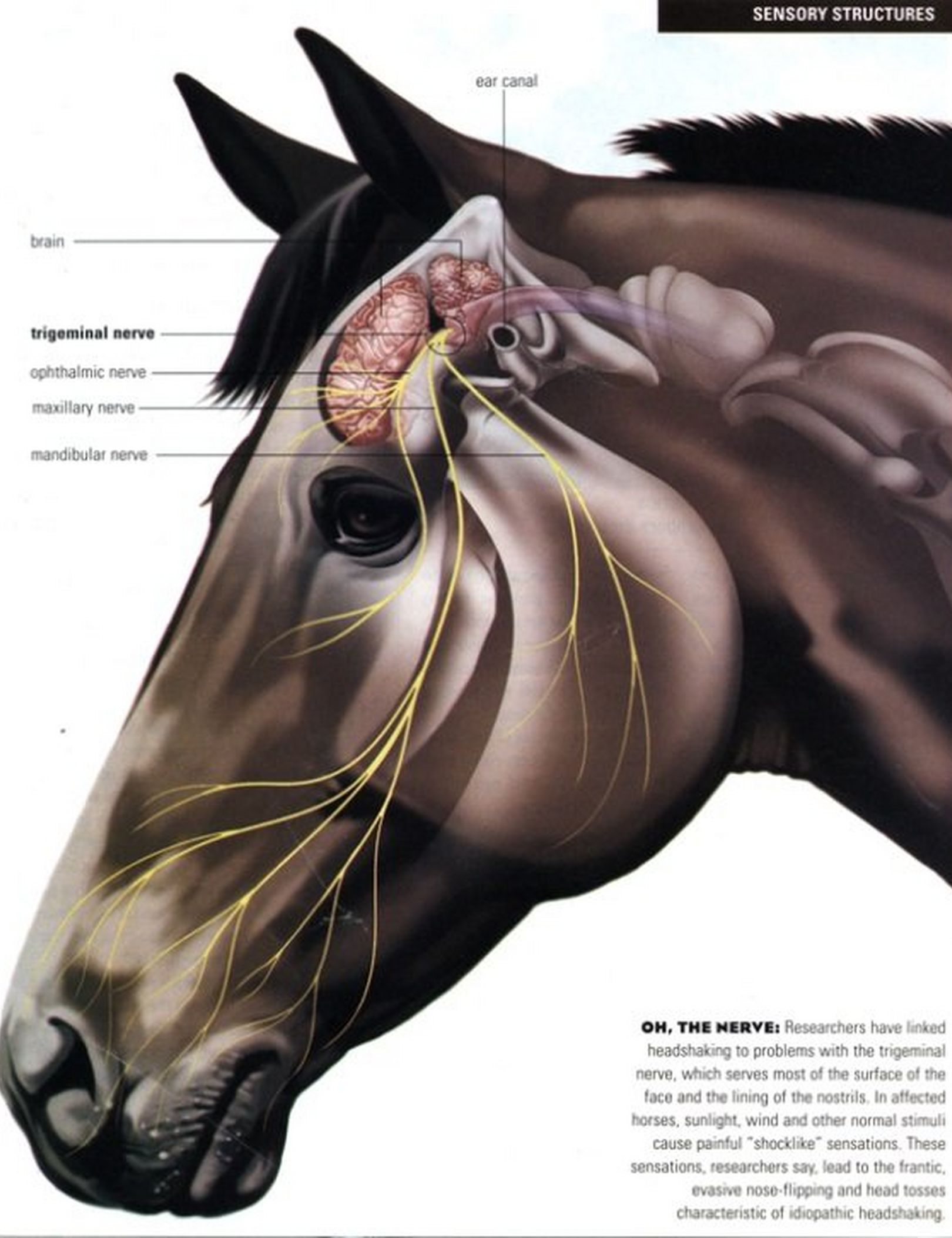
Most Common Symptoms of Headshaking:
• Violent up and down or side-to-side movement of the nose and/or head and neck
• Head shooting up in the air
Frequent Symptoms of Headshaking:
• Frantic rubbing ears/nose/lips on legs or objects
• Sneezing/snorting
• Anxiety
Less Frequent Symptoms of Headshaking:
• Eye tearing and/or blinking
• Nasal discharge
• Sunlight sensitivity
• Hypersensitive to touch
Cases are graded from very mild (grade one) whereby the movement of the head/neck is slight and infrequent. To grade five headshakers who are in extreme pain and discomfort. Horses with headshaking this severe present the most difficulties when deciding on management or treatment options.
Managing headshaking
Fly Masks
Although headshaking cannot be officially ‘treated’, there can be attempts made to lessen the condition and manage the symptoms. To manage headshaking, it is best to reduce anything that causes the nerves to fire more frequently. As mentioned in the ‘trigger’ section above. When a horse is first diagnosed, by reducing the amount of light exposure, you can drastically reduce the symptoms of headshaking. This can be done through the use of masks with an eye cover, like the Equilibrium Field Relief Fly Mask to increase shade over the eyes. It would also be better to stable the horse in a dark area through the day, preferably as dark as possible, with turn out at night time.
When riding, a nose net can be extremely useful due to counter-stimulation. Whilst some horses may take time to become accustomed to it, they have been proven to be useful in reducing the symptoms of head shaking in up to 40% of cases. By using a nose net which attaches to the bridle, such as Equilibrium’s Net Relief Muzzle Net, it provides a mechanical stimulus which prevents nerves firing in the nose thus helping to minimize head shaking. Riding masks can also help with sunlight sensitivity and should be used as much as possible, such as the Equilibrium Riding Mask with Ears as they can also provide relief from flies and bugs which are another triggering factor. These two items may be useful in combination with a ride-on fly rug, such as the Amigo Fly Rider, which makes the horse the least susceptible to flies when in work.

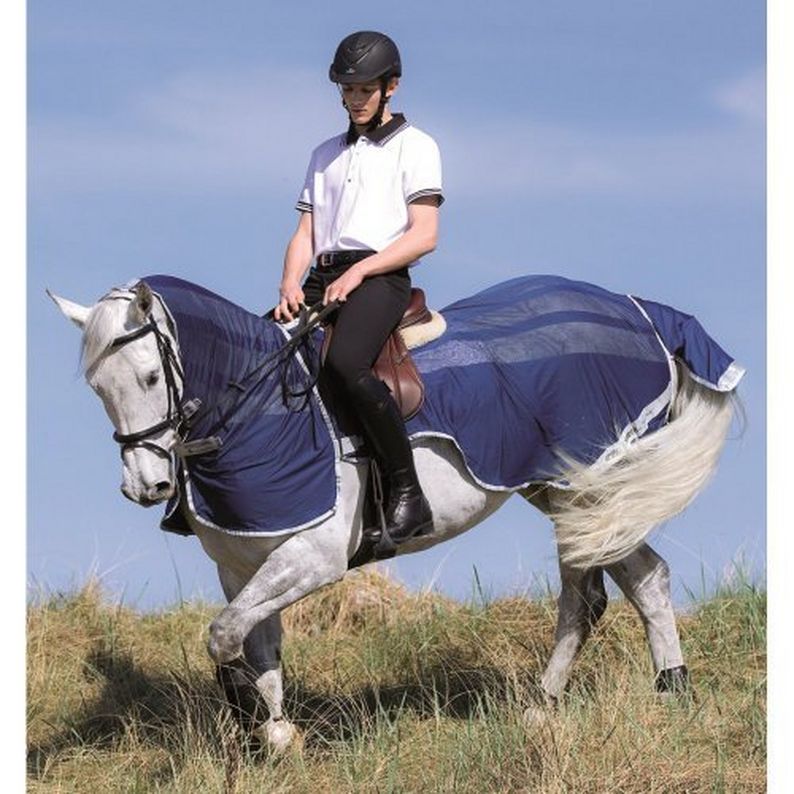
Fly masks and fly rugs in general can sometimes greatly help headshaking horses. The absence of panniculus muscles in the head or neck means that horses are more irritated by bugs. Therefore the use of fly rugs/masks can reduce some headshaking. This is due to the fact that they stop or limit the natural anti-fly reflex as the flies do not irritate the hairs as much.
A fly rug such as the Amigo 3-in-1 Vamoose rug is ideal due to the fact that not only does it cover the whole body (including the belly) thus ensuring the horse is comfortably protected from flies, but it also actually contains Vamoose® insect control technology that is a fly repellent typically used against mosquitos. This can be used in conjunction with a mask such as the Shires Fine Mesh Fly Mask that has full face coverage as well as a nose extension to keep midges at bay from irritating the muzzle.
Fly Repellent
Fly repellents can be used all over the body to provide your horse with as much protection from flies as possible. NAF Off® Deet Power Spray is particularly effective due to the inclusion of the powerful insect repellent known as ‘DEET’.
Supplements
Magnesium supplementation has been shown to have some effect on the symptoms of headshaking – in one study; a positive effect was discovered in 43% of the horses that it was used on. Whilst it may not eliminate symptoms, it can reduce them by calming and reducing the nerve firing. Magnitude by Equine America contains pure Magnesium Oxide, which has many roles within the body including the health of nerve endings and fibres.
Magnesium should ideally be fed daily anyway if there is a deficiency to help maintain a healthy horse. It also promotes healthy nerve tissue and reduces nervous tension. However doses can be made higher when recommended by a vet to have a therapeutic effect on headshakers.
As with all conditions and ailments, the first port of contact should always be a vet for advice. Vets can prescribe medication such as anti-histamines which may reduce the effect of allergies. Or pain relief if the affected horse is in pain.
It is important to realise that this behaviour is not as a result of temperament or training, but a medical condition. Though it has not always been treated successfully, researchers are looking for new ways to alleviate the pain. They are also looking into the cause of headshaking horses! With pain relief/treatment, many horses who headshake can continue to have a ‘normal’ life!
Do you know of any horses with this condition?

